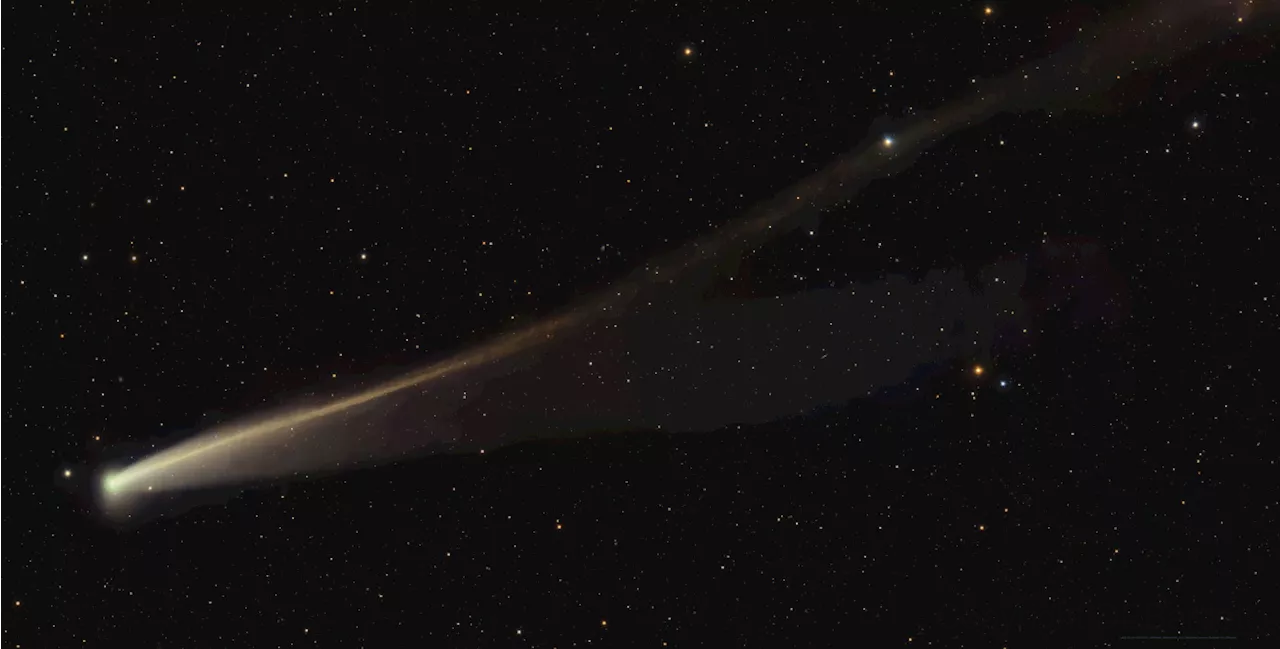UPDATE: Astronomers have made a stunning discovery as the rare golden comet, C/2025 K1 (ATLAS), defies expectations and becomes visible from Earth. This unique comet, which displays a striking golden color, was not supposed to survive its perihelion on October 8, 2025, but it has continued to astonish observers by thriving and becoming brighter than predicted.
The comet, first spotted in May 2025, is currently observable with binoculars, capturing the attention of stargazers across the globe. Its unusual golden hue sets it apart from the typical green or blue colors of comets, a phenomenon attributed to its low carbon ratios and distinctive chemical composition. Astronomer Dan Bartlett, tracking this comet from his backyard in June Lake, California, expressed his amazement:
“This comet was not supposed to survive its October 8th perihelion. But it did survive, and now it is displaying a red/brown/golden color rarely seen in comets.”
With a current magnitude of around 9, C/2025 K1 is impressive enough to be visible from backyards, especially for those equipped with telescopes. According to spaceweather.com’s author Tony Phillips, observers should direct their optics towards the boundary between the constellations Virgo and Leo in the eastern sky just before sunrise for optimal viewing.
The comet is classified as an Oort cloud comet, a category known for its infrequent appearances. Detailed research from the Lowell Observatory reveals that all carbon-bearing components, including CN, are unusually low compared to hydroxide ions, making C/2025 K1 a scientific curiosity. This leads to a significant observation: only two other comets have been recorded with lower carbon ratios.
Astronomers had previously speculated that C/2025 K1 might break apart, but its survival opens up new opportunities for study and observation. As fall and winter approach, experts expect the comet to become increasingly bright, making it a prominent fixture in the night sky.
For enthusiasts and casual observers alike, this development is nothing short of thrilling. The visibility of C/2025 K1 not only provides a rare opportunity to witness a comet up close but also enhances our understanding of these celestial phenomena.
Stay tuned for more updates as astronomers continue to monitor this exceptional event. For those with a keen interest in astronomy, this is an exciting time to engage with the wonders of the universe! If you have questions or tips about science stories, reach out to us at [email protected].







